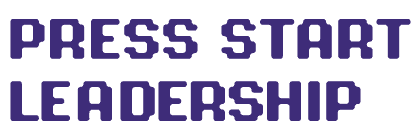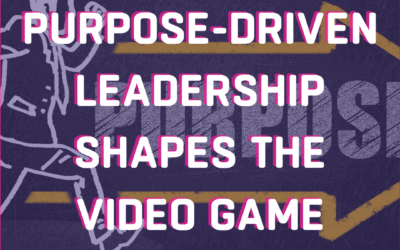A Strategic Guide to Implementing Analytical Practices for Enhanced Team Dynamics and Innovation
In an era dominated by rapid information flow and influential narratives, the ability to critically evaluate the stories we’re told has never been more crucial. The tale of “Cows vs. Kangaroos” isn’t just a humorous family anecdote; it serves as a profound lesson in questioning the narratives presented to us, from childhood misconceptions to complex professional scenarios. This comprehensive guide explores the importance of skepticism, verification, and the robust analysis of accepted truths, particularly within the dynamic realms of leadership and innovation.
The Lesson of the Kangaroos: Questioning the Familiar
The story begins with a simple family tradition that led to an embarrassing yet enlightening classroom moment. This anecdote underlines the foundational lesson: narratives, especially those reinforced by trusted sources, shape our perceptions and can lead us astray if not critically examined.
Actionable Steps:
-
Encourage Curiosity: Foster an environment, whether at home or in the workplace, where questioning is encouraged. Promoting a culture of inquiry helps individuals challenge the status quo and prevents the acceptance of inaccuracies.
-
Educate on Fact-Verification: Implement training sessions that teach teams how to verify facts and check sources. This skill is invaluable, particularly in professional settings where decisions based on incorrect assumptions can lead to significant consequences.
Trust, but Verify: Building Reliable Relationships
“Trust, but verify” is a principle that, while rooted in skepticism, does not advocate for cynicism. Instead, it encourages a balanced approach where trust in individuals or institutions is coupled with a systematic confirmation of their claims.
Actionable Steps:
-
Establish Verification Processes: In professional settings, set up processes that require evidence or second opinions before major decisions are made. This could involve multiple layers of data validation or peer reviews.
-
Transparent Communication: Encourage transparent communication practices where claims or statements, especially those that could have larger implications, are backed up with clear evidence and open to scrutiny.
Dissecting the Narrative: The Importance of Being Open
The ability to dissect narratives critically is a crucial skill in all aspects of life, particularly in leadership and management roles. Being “Open to Everything, Attached to Nothing” allows for a flexible mindset that is essential for adaptive leadership.
Actionable Steps:
-
Promote Diverse Perspectives: Actively seek out and encourage diverse viewpoints within your team. Diversity in thought and background can provide alternative insights and challenge prevailing narratives.
-
Regular Brainstorming Sessions: Conduct regular sessions where team members can discuss and dissect current projects and ideas openly. These sessions should welcome contrarian views and constructive criticism to foster a broader understanding and innovation.
Red Teaming: Critical Analysis in Practice
Red Teaming is a strategy used to improve organizations and projects by assuming an adversarial role to critique and refine ideas and processes. While beneficial, it should be used judiciously to maintain a healthy team environment.
Actionable Steps:
-
Implement Structured Red Teaming Sessions: Integrate Red Teaming into your project cycles, particularly for significant initiatives. Ensure these sessions are structured and focused to prevent them from becoming counterproductive.
-
Feedback and Follow-Up: After Red Teaming sessions, provide clear feedback and actionable steps to address the critiques raised. This helps convert criticism into constructive paths forward, ensuring that these sessions contribute to positive outcomes.
Cultivating a Culture of Critical Engagement
Developing a culture where narratives are routinely examined and not just accepted at face value is beneficial for continuous growth and adaptation, especially in industries like video game development where innovation is key.
Actionable Steps:
-
Leadership Workshops: Organize workshops that focus on critical thinking and narrative analysis. These should cover techniques in logical reasoning, bias recognition, and strategic questioning.
-
Incentivize Critical Thinking: Recognize and reward team members who demonstrate exceptional critical thinking skills. This not only motivates individuals but also sets a precedent for others to emulate.
Integrating Critical Thinking into Daily Operations
To ensure that critical thinking becomes an integral part of your organization, it needs to be woven into the fabric of everyday activities and operations.
Actionable Steps:
-
Daily Critical Checks: Encourage team members to perform daily critical checks on their work, questioning the routine processes and the rationale behind ongoing projects. This practice helps identify potential improvements and prevent complacency.
-
Critical Thinking Toolkits: Develop and distribute toolkits that include checklists, guidelines, and questions designed to prompt critical thinking. These tools can help staff approach problems more analytically and maintain a high standard of scrutiny.
Enhancing Decision-Making Processes
Effective decision-making is at the heart of successful leadership and project management. Incorporating structured critical thinking can greatly enhance the quality of decisions made within your team or organization.
Actionable Steps:
-
Structured Decision Frameworks: Implement decision-making frameworks that require a step-by-step analysis of all available options, risks, and outcomes. Techniques such as SWOT analysis (assessing strengths, weaknesses, opportunities, and threats) can provide a structured way to critically assess each decision.
-
Scenario Simulation: Regularly conduct scenario simulation exercises that challenge your team to think through complex situations and make decisions under various hypothetical conditions. This not only improves analytical skills but also prepares the team for unexpected challenges.
Fostering a Sustainable Culture of Innovation and Scrutiny
To maintain a competitive edge, particularly in industries like video gaming where technology and consumer preferences evolve rapidly, fostering a culture that embraces innovation through a critical lens is essential.
Actionable Steps:
-
Innovation Labs: Establish dedicated spaces or times where team members can experiment with new ideas without the pressure of immediate results. These labs should encourage challenging existing paradigms and exploring unconventional solutions.
-
Encourage Reflective Practices: Promote practices such as journaling or reflective discussions that allow team members to contemplate and assess their work and thought processes critically. This reflection can lead to personal growth and better problem-solving skills.
Scaling Critical Thinking for Larger Projects or Organizations
As organizations grow, the challenge often lies in maintaining a consistent level of critical engagement across all levels and departments.
Actionable Steps:
-
Train the Trainers: Develop a ‘train the trainers’ program where key team members become advocates and instructors of critical thinking. This approach helps disseminate critical thinking skills throughout the organization more effectively.
-
Organizational Audits: Periodically conduct audits to evaluate how well critical thinking is integrated into various departments and projects. These audits can identify areas where further intervention or support may be necessary.
Measuring the Impact of Enhanced Critical Thinking
To validate the effectiveness of integrating critical thinking into your organizational practices, it’s important to measure its impact on performance, innovation, and culture.
Actionable Steps:
-
Performance Metrics: Establish clear metrics that can evaluate the impact of critical thinking on project outcomes, such as the number of innovative solutions implemented, the efficiency of problem resolution, or improvements in team productivity.
-
Feedback Systems: Set up comprehensive feedback systems that allow team members to provide insights on how critical thinking practices have affected their work and interpersonal dynamics. This feedback can be invaluable in fine-tuning your approach.
Final Thoughts
By embracing the power of intention and fostering a culture that values critical thinking, leaders can significantly enhance the innovative capacity and decision-making prowess of their teams. The strategies outlined in this guide are designed to empower leaders in the video game industry and beyond to cultivate environments where questioning the status quo becomes the norm, and where every narrative is scrutinized for accuracy and potential. In doing so, organizations can not only avoid the pitfalls of misleading or incomplete information but can also unlock new avenues for growth and success.
Thank you for reading this article to the end. I hope it has been informative and helpful. If you’d like to learn more about the topics we covered, I invite you to check out my podcast and my YouTube channel where I delve into these subjects in more depth.
Additionally, I would love to stay in touch and keep you updated on all the latest developments and insights in the world of leadership. That’s why I encourage you to sign up for my newsletter. Not only will you receive regular updates, but as a thank you for joining, I will also send you my free eBook, “5 Heroic Leadership Skills.” This eBook is packed with practical tips and strategies that will help you take your leadership skills to the next level.
So don’t wait! Sign up for my newsletter today and start your journey towards becoming a more effective and inspiring leader. I can’t wait to hear from you.
🎮✨ Join the Press Start Leadership Discord! 🌟💬
Ready to level up your leadership game? 🚀 Join our exclusive Discord channel where we dive into leadership, mindfulness, and all things awesome in the video game industry! 🎯✨ Connect with fellow enthusiasts, share insights, and join our Accountability Club to stay on track and crush your goals together! 💪🔥
Click here to join the adventure: Press Start Leadership Discord
🎮✨Work With Me!🌟🎮
If you’re on the quest to elevate your team’s leadership, production, or game design capabilities, I’m here to assist! Leveraging extensive experience and a strategic approach, I offer personalized audits, bespoke workshops, and leadership retreat facilitation to drive your team toward excellence. My commitment is to provide efficient, reliable, and proven support, ensuring you have the tools and insights needed to thrive. Ready to unlock your team’s full potential and achieve unparalleled success? Don’t hesitate—Press Start on your journey to transformation today! Feel free to reach out directly to discuss how we can tailor a solution to meet your unique needs and goals. Let’s connect and take your team’s performance to the next level!
🔗 www.pressstartleadership.com
📧 contact@pressstartleadership.com
🎮✨ Discover the Mysteries of Play On Words Studios! 🌟🚀
I’m excited to share the incredible projects Play On Words Studios, my indie studio, has been working on! 🎨🕹️ Dive into our creative world and see the games we’re crafting just for you.
- Check out our Studio: Play On Words Studios
- Wishlist Shadow City Mysteries: Case Files – Rise of the Rat King: Wishlist Now!
- Wishlist Shadow City Mysteries: A Clockwork Noir on Steam: Wishlist Now!
- Pre-Order for our TTRPG Book: Pre-Order Here!
- Join Our Discord: Play On Words Studios Discord
Join us on this amazing journey and be a part of something truly special! 🌠🎉





